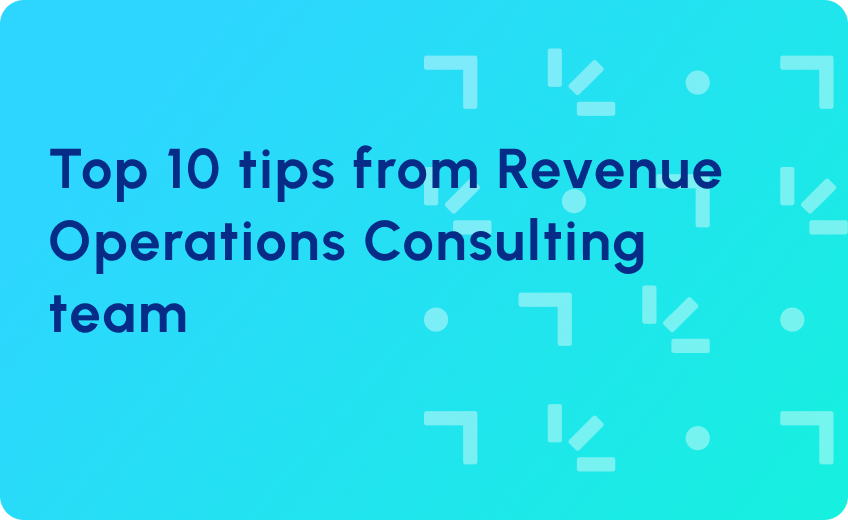
Make Product Data Your PLG Growth Engine
One of the most common challenges in a product-led growth environment is the disconnect between your product and your CRM / marketing automation platform. Without real-time product usage data flowing into tools like Marketo or HubSpot, marketing and sales teams are left guessing instead of triggering meaningful, timely actions.
In this article, we’ll explore why syncing product data into your MAP is so important, how to do it, and best practices to make it work for you.
Why Product Data Matters for PLG Automation
Product usage data is the lifeblood of effective PLG marketing and sales. It provides rich context about what users are doing, allowing teams to respond with highly relevant outreach. In fact, PLG companies routinely use product analytics data to automate marketing campaigns, inform sales outreach, and customize user experiences. Here are some key benefits of syncing product data with your marketing platform:
- Behavioral nurturing: With in-app events and usage history at your fingertips, you can create drip campaigns and automated touches based on user behavior, rather than generic one-size-fits-all emails. For example, if a user skips a key feature during onboarding, you can automatically send a tip or tutorial about that feature.
- Lifecycle progression: Product data powers smarter lead scoring and lifecycle stage progression. A free trial user who hits certain usage milestones could be flagged as a sales-qualified lead or moved into a premium upsell track. This ensures prospects get the right attention at the right time, accelerating conversion from free to paid.
- Personalized messaging: Usage data enables both in-app and email personalization at scale. Knowing which features a customer uses (or hasn’t used) lets you tailor messages to their needs..
Syncing product data into Marketo or HubSpot enables organizations to stop guessing and start engaging users with context-aware, timely marketing. It’s a critical piece in driving adoption, retention, and expansion in a PLG model.
Common Product Data Sources and Tools
To activate product data in your GTM workflows, you need a unified foundation where usage signals are collected, normalized, and made accessible for analytics and automation. Most PLG companies rely on a combination of product analytics platforms, CDPs, and cloud data warehouses to serve as the operational source of truth.
- Product Analytics Platforms (e.g., Amplitude, Mixpanel)
These tools record user events and interactions in your app or product. They provide insights into user journeys and can often forward events to other destinations. These analytics are important for understanding behavior and are often the first place product data gets collected.
- Customer Data Platform (e.g., Segment)
A CDP is a must-have for product-led companies to capture all signups and usage events, standardize them, and then route them into various other systems. For example, Segment can stream an “Account Created” or “Feature A Used” event in real-time to HubSpot, Marketo, or any other tool you configure. This real-time pipeline prevents data silos and ensures all tools see the same user actions.
- Data Warehouse (e.g. Snowflake, BigQuery)
Many companies funnel raw event data into a central warehouse like Snowflake for storage and analysis. The warehouse becomes the single source of truth where massive volumes of product data live. In fact, Snowflake is one of the most popular choices for PLG businesses due to its scalability.
However, data in a warehouse is only useful for automation if you can get it out. The next step is moving that data into Marketo or HubSpot and mapping it to something actionable.
Integration Techniques for Syncing Product Data
How do you actually sync product usage information into a marketing automation platform? There are a few common integration approaches, each with its pros and cons:
- Reverse ETL Platforms
Reverse ETL tools pull data from your warehouse and push it into SaaS tools like HubSpot or Marketo. Essentially, you write a SQL query (or use a visual mapper) on your warehouse data, and the reverse ETL tool matches the results to contacts/leads in the MAP and updates their fields or custom objects. This is great for syncing computed metrics or flags (e.g. “Logged in 5+ times in last week”).
Reverse ETL solutions make the warehouse actionable without manual CSV uploads, integrating product data directly into everyday workflows.
Tip: Many teams schedule reverse ETL or batch sync processes to run hourly or daily—but keep within Marketo’s API constraints (typically capped at 50,000 calls per day, with rate limits of ~100 calls per 20 seconds and up to 10 concurrent requests).
- Direct APIs or Webhooks
For a more real-time approach, you can use the native APIs of HubSpot or Marketo, or set up webhooks from your app. For instance, your product could call the Marketo REST API whenever a key event happens, or use HubSpot’s tracking code and forms to record activities. This approach can achieve true real-time triggering (no waiting for the next batch sync).
However, building a custom integration requires developer effort and maintenance. It’s best for simpler use cases or when you only have a few critical events to track (e.g. “Trial Started” or “Account Upgraded”), since maintaining a large number of API event calls can get complex (and again, watch out for rate limits).
- Customer Data Platforms
As mentioned, CDPs can act as integration middleware. If you’re already capturing events in a tool like Segment, you can often pipe those events directly into HubSpot or other MAPs without custom code. Segment has out-of-the-box destinations for HubSpot, which can create or update contacts, and you can use tools like Zapier or Tray.io for Marketo integrations.
The advantage here is real-time streaming — events are forwarded as they happen. The downside is you might be limited in how much transformation or filtering you can do (compared to the full SQL power of a warehouse). Still, this is a quick way to get product data in front of marketers in real time, enabling immediate triggers on user actions.
Tip: Each of these techniques can accomplish the goal of getting product usage data into your marketing automation system. In fact, many organizations use a combination: for example, Segment for instant event triggers and a reverse ETL pipeline for nightly sync of aggregated metrics. Choose the mix that fits your team’s resources and the urgency of the data.
From Event to Action: Mapping Data to Drive Campaigns
Syncing the data is only half the battle, you also need to map it appropriately in Marketo or HubSpot and use it to trigger campaigns. This often means creating custom fields or objects to store product events or usage indicators.
| Mapping example Imagine a user in a free trial just hit the milestone of uploading their first file in your app. Here’s how you could map and act on that: Event capture: Your product analytics/CDP records an event “Uploaded First File” with the user’s ID and timestamp. Data sync: That event data flows into your warehouse (Snowflake) and, within an hour, your reverse ETL tool syncs an update to the MAP. It might set a field. First_File_Uploaded = True on the corresponding lead/contact record. Marketing trigger: In HubSpot or Marketo, you have an automation rule that says “If First_File_Uploaded becomes True, then enroll this user in the ‘Onboard – Files Feature’ email sequence.” The user immediately gets a tailored email like “Great job uploading your first file! Here’s how to get even more out of [Product].” Follow-up action: The same trigger could also increment a usage score or notify the sales team. For example, Marketo could add the lead to a list for “highly activated trials,” or HubSpot could create a task for a rep to check in. This ensures high-intent users get timely human attention in addition to automated nurtures. |
Sync Frequency & Governance: Best Practices
Keep product-to-MAP syncs clean, fast, and strategic. Here’s how:
- Use the right cadence
- Real-time (API/webhook) for critical events like onboarding steps or conversions
- Hourly/daily syncs (via Reverse ETL) for less-urgent metrics
- Stay within platform limits — e.g., Marketo allows ~50,000 API calls/day
- Build for reliability
- Add alerts for sync failures or API errors
- Deduplicate batch updates to prevent campaign glitches
- Document fields and sync logic for transparency and rollback
- Start lean, then scale
- Begin with high-impact events (e.g., “trial started,” “activated key feature”)
- Get feedback from sales/CS to refine what actually drives value
- Regularly revisit your mappings and scoring logic
Need Help Making Your Product Data Actionable?
RevOps Global specializes in building high-impact PLG workflows that connect product signals to revenue outcomes.




